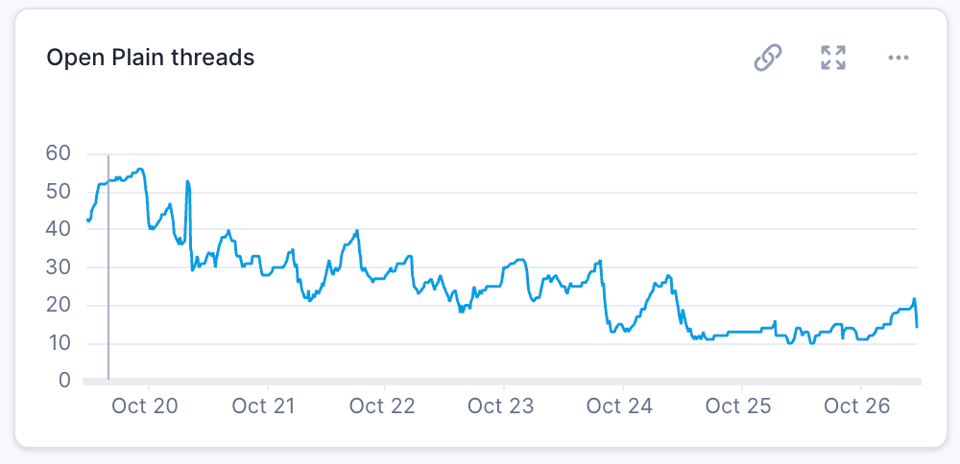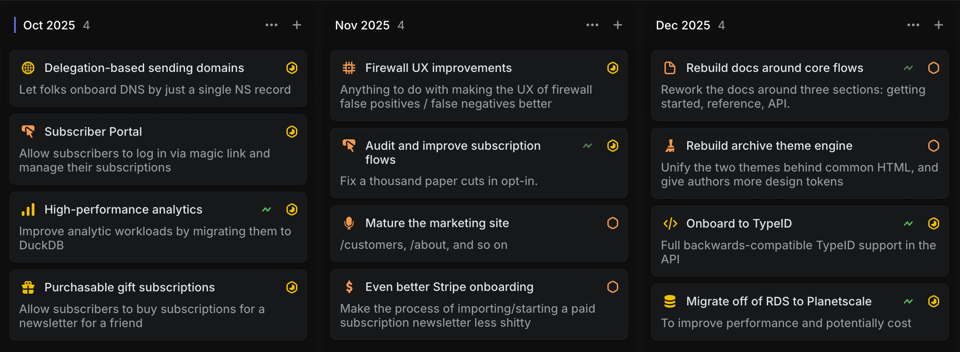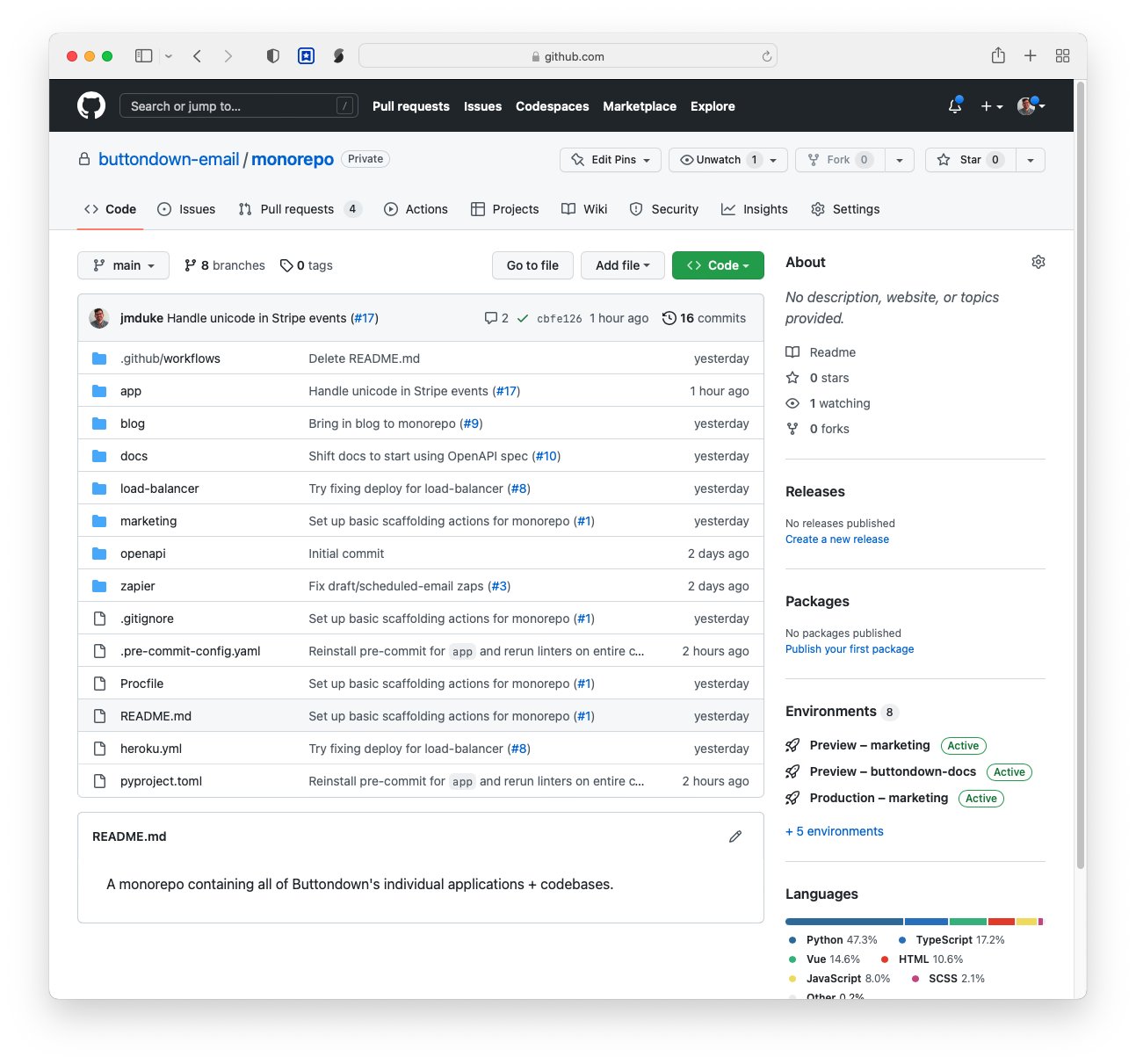Archives! Archives! Archives!
This is going to be a special single-issue edition of the week notes: all about archives. I talked about it a bit last week (Dependencies; End of Year;...
Dependencies; End of Year; Templating engine; Interactivity
Dependencies Two big milestones in the codebase this week, for unrelated reasons: Mary unshipped Axios on Wednesday; I’m unshipping SCSS (or Sass; I can...
OSS; Site; Changelog; Linkdump
OSS From the upcoming blog post on our open-source funding: This year, we’ve added two new open-source tools to our stack: MiseHas become essential for...
CleanApp; Patreon; Indices; Support
CleanApp A few weeks ago, I wrote about wishing that an app to let you Anki your marketing site pages existed, and my friend Rasul built exactly that. I...

Support queue; Plain; DNS; Stripe.
Support Number of tickets open, tracked in BetterStack We are slowly and steadily making our way back down to inbox zero on the support side, having spent...
Mise; Incidents; Anki; Dogfooding the API
Mise I spent a few hours playing around with Mise, which we're already using for managing some of our dependencies in the monorepo. It almost pains me to...
Rendering; DuckDB; Stripe; DNS
Rendering Took four hours to get four lines of CSS. Every quarter, I gather a handful of bug reports we've received around email rendering issues in esoteric...

Planning; Database; Onboarding; Home!
We are officially in Q4 — the time has flown. I'm reading through the changelog entries from this time last year, and it feels like a foreign country. It's...
Unshipping things
Buttondown has been around long enough, and the core set of assumptions around which we've laid our foundations have shifted and mutated so much, Ship of...
2.0; DjangoCon; Investments vs. bets
Lord forgive me but it’s time to go back to the old me.— Bugs Bunny I can think of no better way to revive a years-dead newsletter than with a little bit of...
Expanding to multiple ESPs
Well, gang, thanks for letting me soft-launch surveys last week. The results are in, and I promise to play by the rules: this week, a technical deep dive and...
Trading time for visibility
Today's question comes from Benedict: Do you track events in Buttondown and how do those feed back into product development? How have you changed what you...
Long-tail SEO as Crusonia Plant
little fascinated how an indie dev cuts up a day and how you prioritize the writing with the dev work.example: when did the 'comparison' docs become a...

January's goals
I wanted to spend some time in January setting up some systems for both writing and working that would carry through the rest of the year: I succeeded (more...
Q1 planning
I took a break from the mistletoe chaos of the dead zone between Christmas and New Year’s to do two things, both portrayed below: Triage Buttondown’s roadmap...

On monorepos
I wanted to write about annual planning, and how this year is going to differ from previous ones, but I have (in true fashion) procrastinated finalizing my...
Growth, ninjas
Revue and growth I mentioned a few weeks ago that my cockroach-esque strategy of "just stay alive while competitors flame out" had led to another recent...
Django-Ninja, Ruff, Helpscout
Sorry for the week off! I spent it in Florida with my soon-to-be in-laws (it was relaxing, in the way that Florida always is) and am digging myself out of...
Two recent design mistakes
The challenge/luxury/eccentricity of working independently on a big piece of software is that you make and own all of the design decisions. There is no...
Data onboarding
“Data onboarding” is a slightly bureaucratic name for a very boring and important process — bringing data from Service A to Service B when a customer joins...